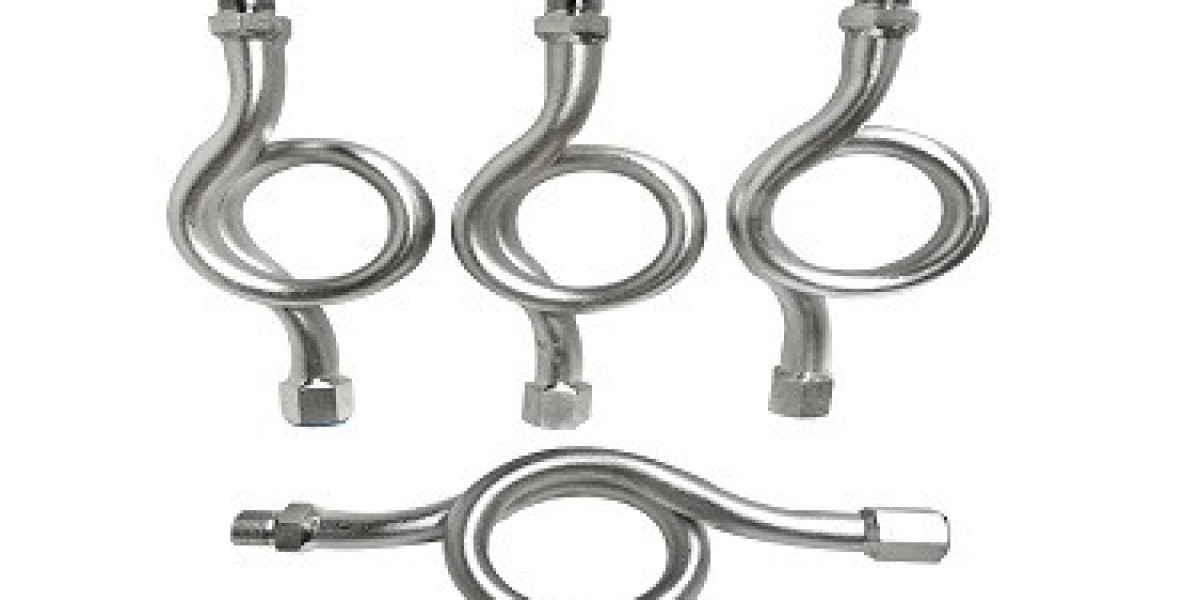In industries where fluids and steam flow under high pressure, instruments like pressure gauges face a significant risk of damage. One small component prevents this damage and ensures smooth operations the syphon pipe. Though simple in design, a syphon plays a critical role in protecting equipment and ensuring accurate measurements.
In this blog, we will explore the working principle, design, types, materials, applications, and advantages of syphons in detail.
What is a Syphon Pipe?
A syphon pipe is a bent tube or coil that protects instruments, especially pressure gauges, from direct contact with steam or hot fluids. It is commonly used in boiler systems and industrial pipelines.
The main role of a syphon pipe is to:
Trap condensate (water) inside its bend.
Reduce the steam temperature before it reaches the instrument.
Prevent damage to sensitive parts like gauge diaphragms.
This simple yet effective device improves both accuracy and durability of equipment.
Working Principle of a Syphon
The working of a syphon pipe is based on condensation and gravity.
When steam enters the syphon, it condenses as it passes through the bent section.
The condensed steam (water) forms a protective barrier.
This water layer prevents direct contact between the hot steam and the pressure gauge.
As a result, the gauge receives pressure readings safely without overheating.
In addition, a syphon also allows liquid transfer between containers when placed at different levels. This application relies on atmospheric pressure and gravity, the same principle that has been used for centuries in irrigation and fluid handling.
Types of Syphon Pipes
Syphons are designed in various shapes depending on the application. The most widely used types include:
1. Pigtail Syphon
Shaped like a coil (spiral).
Common in boiler and steam applications.
Provides better cooling due to longer length.
2. U-Type Syphon
Bent in the form of a "U."
Stores water easily in the loop.
Suitable for pressure gauges in steam systems.
3. Circular Syphon
A circular loop or coil.
Offers excellent heat dissipation.
Used in high-temperature and high-pressure environments.
4. Straight Syphon
Straight pipe with a simple bend.
Compact and easy to install in tight spaces.
Mostly used in low-pressure conditions.
Materials Used in Syphon Manufacturing
Since syphons operate in extreme pressure and temperature, they must be made from durable materials. The common options are:
Carbon Steel – Widely used for standard applications.
Stainless Steel – Corrosion-resistant and suitable for harsh environments.
Alloy Steel – High strength and suitable for power plants.
Brass – Cost-effective for moderate-temperature systems.
Material selection depends on the fluid, temperature range, and pressure requirements.
Applications of Syphon Pipes
The versatility of syphon pipes makes them useful in many sectors:
1. Steam and Boiler Systems
Protect pressure gauges from direct steam.
Ensure accurate pressure monitoring.
Improve gauge life span.
2. Fluid Transfer
Move liquids between two levels using gravity.
Used in chemical, water treatment, and beverage industries.
3. Agriculture and Irrigation
Farmers use syphons to transfer water from canals to fields.
Provides a low-cost alternative to mechanical pumps.
4. Oil, Gas, and Petrochemical Plants
Protects measuring instruments from aggressive fluids.
Prevents damage in high-temperature environments.
5. HVAC and Refrigeration Systems
Helps in removing condensate from pipelines.
Prevents damage to cooling instruments.
Advantages of Using Syphon Pipes
Syphons provide multiple benefits in industrial and everyday use:
Instrument Protection: Shields gauges from extreme steam heat.
Accuracy in Readings: Maintains correct pressure measurement.
Durability: Withstands high pressure and temperature.
Versatility: Works in different industries from agriculture to power plants.
Simple and Cost-Effective: Easy installation and minimal maintenance.
Installation of a Syphon Pipe
For effective working, installation must be done carefully:
Fill the syphon with water before connecting.
Connect one end to the steam or fluid line.
Attach the pressure gauge to the other end.
Choose the correct type (pigtail, U-type, straight) based on application.
Inspect regularly for corrosion or blockage.
Maintenance of Syphon Pipes
Though syphons require little maintenance, periodic checks extend their life:
Inspect for Wear and Corrosion: Replace damaged syphons quickly.
Clean Scale Deposits: Remove blockages caused by minerals.
Check Condensate Level: Ensure sufficient water remains in the bend.
Monitor Gauge Performance: Replace syphon if readings are inaccurate.
Common Mistakes to Avoid with Syphons
Installing a syphon without pre-filling it with water.
Using the wrong material for high-pressure steam.
Ignoring routine checks and allowing scale buildup.
Choosing the wrong syphon type for the system.
Difference Between Syphon and Trap
People often confuse a syphon pipe with a trap. Here’s how they differ:
Syphon – Protects instruments from hot steam by cooling it down.
Trap – Prevents gases or odors from flowing backward in plumbing.
Real-Life Example of a Syphon
In a power plant boiler system, the pressure gauge is installed with a pigtail syphon. As steam enters the syphon, it condenses in the coil. The trapped water prevents direct steam flow into the gauge, ensuring safe and accurate readings. Without the syphon, the gauge would overheat, fail quickly, and cause system breakdown.
Future Scope of Syphon Pipes
Even as industries move towards digital gauges and smart sensors, syphons remain relevant. Their mechanical protection and cost efficiency make them irreplaceable in high-temperature environments. With the development of advanced alloys and stainless steels, future syphons will offer even greater durability and performance.
Conclusion
A syphon pipe may look like a simple bent tube, but it plays a critical role in industrial safety and efficiency. From protecting sensitive gauges in boilers and steam systems to assisting in irrigation and fluid transfer, syphons prove their value every day.
By selecting the right type and material, industries can ensure longer life for equipment, safer operations, and cost savings. Whether in a pigtail, U-type, straight, or circular design, syphon pipes continue to be one of the most reliable tools in engineering and industry.













